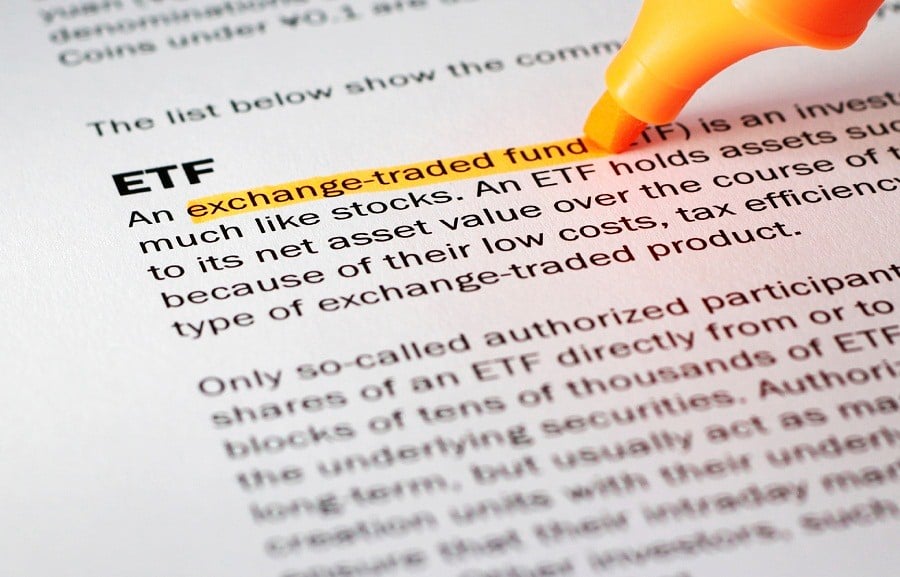The Securities and Exchange Commission's solicitation of perspectives on the state of exchange-traded products produced a fruitful, if predictable, bounty of views from the asset management industry.
The
60-day comment period, which ended Monday, attracted 29 comments, 16 of which arrived on the last day.
While the letters reflected general support for more and better investor education efforts, there were also some strategic efforts by companies to protect their turf.
For example, State Street Global Advisors, the third-largest ETF provider with $431.8 billion in ETF assets, argued that ETFs are efficient, transparent and provide good price discovery.
In SSGA's
eight-page letter, vice president and managing counsel Joshua Weinberg wrote, “In the most volatile markets over the last 15 years, ETFs have continued to trade effectively. We have observed that ETF trading volumes increased sharply in September 2001 and in late 2008 as investors looked to ETFs for their key attributes of transparency and liquidity.”
The Vanguard Group, the second-largest ETF provider with $432.7 billion in ETF assets, described ETFs as highly regulated, effective and efficient investment products.
AGAINST FULL PORTFOLIO DISCLOSURE
In
its letter, signed by managing director and general counsel Heidi Stam, Vanguard argued against full portfolio disclosure as potentially harmful to funds.
Disclosing a complete list of portfolio holdings “would be particularly concerning for index funds during specific events impacting a target index, such as publicly announced corporate actions and index reconstitutions,” Ms. Stam wrote.
“In such instances, market participants may use a fund's list of portfolio holdings to reverse engineer its proprietary portfolio management and trading techniques, anticipate the amount of a particular security the fund must buy or sell, and profit by transacting in the security prior to the fund's transactions,” she continued. “This would harm the fund and its shareholders by causing the fund to pay more, or receive less, or securities in which it transacts.”
In its
51-page request for comment on ETPs, the SEC emphasized the increased complexity of the products and the accelerating pace of growth since the first ETF began trading in January 1993.
Between 2006 and 2013, the SEC reported, the number of ETPs listed and traded rose by an average of 160 per year. That compares to an average annual increase of 17 between 1993 and 2005.
Through December, the SEC counted more than $2 trillion invested in 1,664 ETPs.
COMPLEXITY RAISES CONCERNS
Along with the growth has come complexity that continues to raise concerns among regulators, financial advisers and investors.
“Most mainstream ETFs function exactly as they were designed to, but others, most often in the commodity space, can expose inherent limitations that the average person doesn't understand,” said Paul Schatz, president of Heritage Capital.
Mr. Schatz, who did not submit a comment letter to the SEC, cited the effects of contango and backwardation, which can dramatically impact the net asset value when underlying investments are rising or falling. Contango occurs when a futures price, typically of a commodity, is higher than the expected spot price. Backwardation is the opposite.
The same goes for ETPs that apply daily leverage to an underlying index.
“The average person doesn't understand that leveraged products aren't meant to be bought and held, because they're trading vehicles,” Mr. Schatz said. “That's a huge problem, and all the education in the world doesn't seem to be solving it.”
Then there is the whole riddle of fixed-income ETFs: While such ETFs have full daily liquidity, the underlying assets have much less liquidity.
The SEC's confusion and frustration were evident earlier this month when it
issued a Wells notice to Pacific Investment Management Co. regarding the pricing of securities in the PIMCO Total Return Active ETF (BOND).
“Pricing fixed-income instruments is not the same as pricing shares of Google and IBM,” Mr. Schatz said. “These are all part of the growing pains, and the free market will eventually fix these things, but I will give the SEC credit for demanding the education of consumers, even though it's an uphill battle.”
In its
27-page comment letter, the Investment Company Institute said the “arbitraging in bond ETF shares is, at most, a minor contributor to and certainly not a primary driver of, price changes in the underlying bond markets.”
TAPER TANTRUM TRADING
The ICI letter, signed by David Blass, the organization's general counsel, detailed the trading activity in government, corporate, high-yield and municipal bond ETFs during the 2013 taper tantrum compared to more normal periods and found that investors were not hindered during the recent period of market stress.
Todd Rosenbluth, director of mutual fund and ETF research at S&P Capital IQ, acknowledged that the taper tantrum was a good test of bond ETF performance and liquidity.
“If you're buying an ETF, you want to be able to get out when you want to get out,” he said. “From a liquidity standpoint, I think ETFs are better than the alternative, which is owning straight bonds.”
The ICI letter also cited the
performance of the Global X FTSE Greece 20 ETF (GREK) during the month-long shutdown of the Greek stock exchange, from June 29 to Aug. 3, as evidence that ETFs can add liquidity to markets.
“The test of how well market participants gauged the value of GREK's underlying securities and incorporated that information into the price of GREK was apparent on the first day the Greek stock market reopened,” the letter stated. “The price of GREK barely moved, while the benchmark index moved down toward the price of GREK.”
Mr. Rosenbluth agreed that when the Greek stock market closed, “many investors were able to turn to GREK to express pessimism or optimism on the Greek crisis even though their market was closed. And the stock market reopened without as much investor panic because the ETF provided transparency into the local market that was otherwise closed.”







